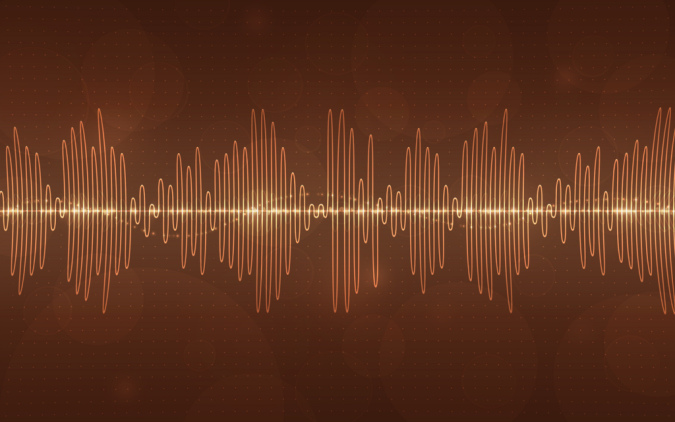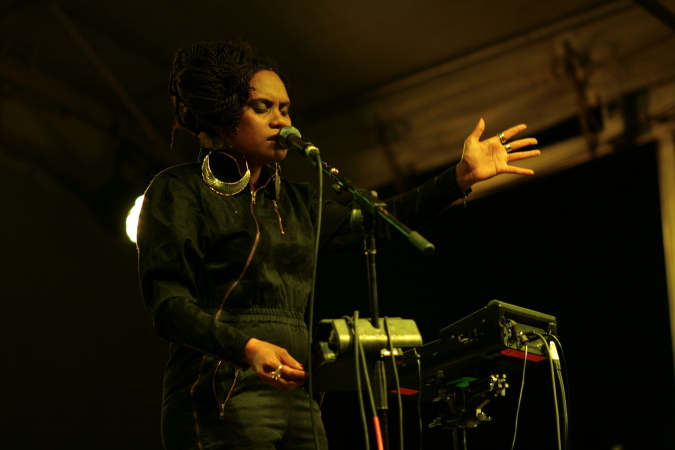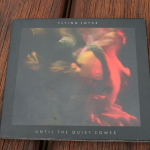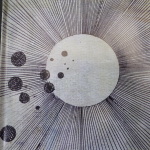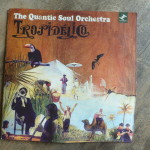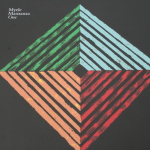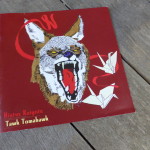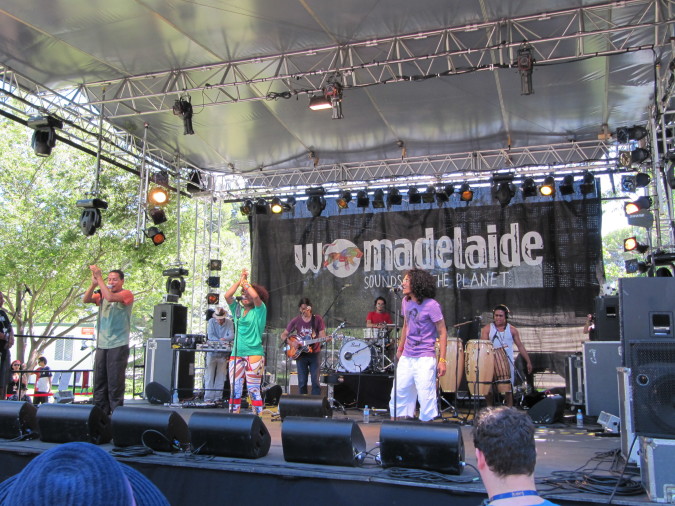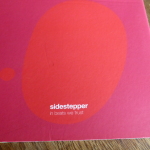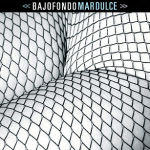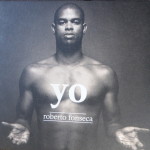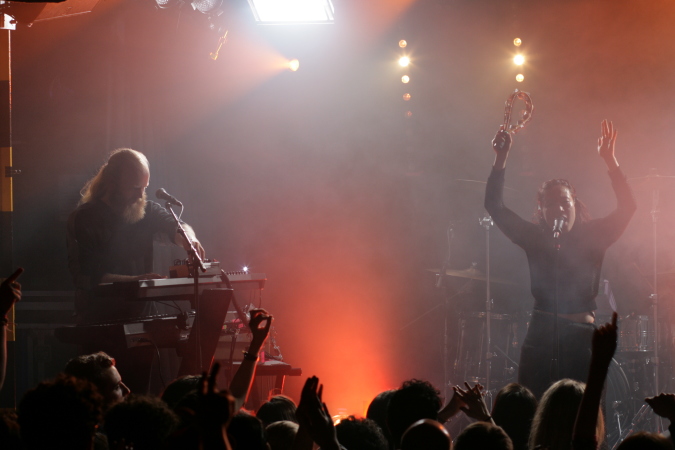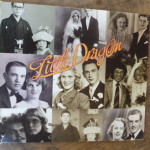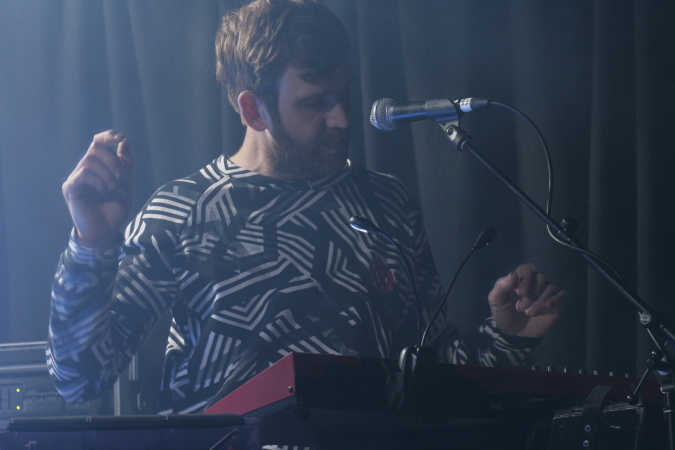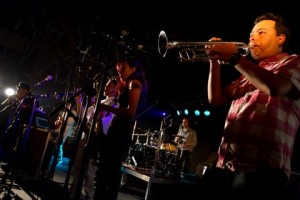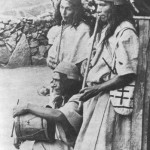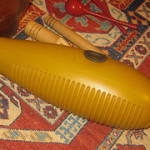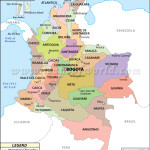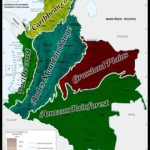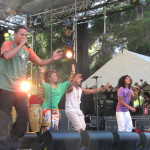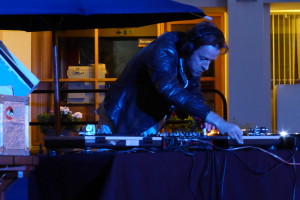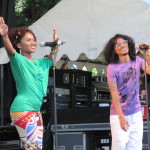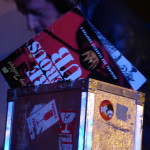‘E’ in Beaver’s A to Z of Fusion goes to the sounds of electronic music for their like-it-or-not, rapid infiltration of almost every type of music in just about every part of the world since their beginnings at the end of the 19th century.
A Shallow History of Infiltration
The history of electronic music is long and involved. It’s not a story I’m qualified to properly tell, nor do I want to try. The over-simplified, short, sketchy version is this…
 First came the creation of electronic musical instruments like synthesizers. The Beatles weaved them into their music in the late 1960’s, as did artists before them. Pink Floyd did too, even Herbie Hancock, and countless artists since them.
First came the creation of electronic musical instruments like synthesizers. The Beatles weaved them into their music in the late 1960’s, as did artists before them. Pink Floyd did too, even Herbie Hancock, and countless artists since them.
The development of electronic music technologies continued, including digital audio to rapidly thereafter replace analog.
The creation of music using only electronic means became increasingly common.
Computer software advanced. Access to computers and other technologies became easier for most of the world.
Certainly electronic music got its grips on ‘less-developed’ (ie. poorer) parts of the world sooner than the richer ones, but it eventually infiltrated just about everywhere. Seven years ago in Havana you can imagine my dismay when a young man in the technologically un-advanced, insulated Cuban bubble, proudly played me the reggaeton (an electronic-music-Evil) track he’d just finished making on his archaic equipment.
Some consequences of the world’s electronic music infiltration I’m into, some I am most definitely not.
Post-Infiltration
Nowadays it’s rare to find music made in the warm, living analog world. That’s a tragedy of epic proportions. Thankfully some artists still deliver it – most recently D’Angelo with Black Messiah, and regularly by Will Holland (aka Quantic).
Digital music consumption now dominates – another tragedy of epic proportions.
Nowadays and for a long time it’s been open to any man, woman or their dog with a computer to make music on it. It’s great that so much creativity is flowing from people around the world, but the truth is that I have little tolerance for listening to music produced wholly and solely in the electronic domain.
It’s not all doom and gloom though – the infiltration of electronic music has had its benefits too. Today some of my favorite music from around the world is by artists/groups who innovatively utilise and blend the sounds of electronic instruments into their musical mix whilst valuing and maintaining the living, human, conventional sounds.
It is the sounds of those instruments, and the people playing them, that is the living chi of music. They make the music sound and feel alive to me. They physically and emotionally connect me to the music. Without that living element, with purely electronic sounds, the music is a lost cause for my ears.
Infiltration Samples
Check out these sample tracks by a handful of contemporary artists from different countries who mix up the sounds of electronica and the living to produce killer musical results. Remember these are just super-compressed mp3 versions of the songs. Buy the music on vinyl where you can, or at least cd, to hear it in its full, living sound glory.
1. NGAIIRE (Papua New Guinea/Australia)
‘Fireflies’ – NGAIIRE – Lamentations
x
Check out more NGAIIRE music + footage from live shows here.
2. Flying Lotus (USA)
‘Never Catch Me’ – Flying Lotus feat. Kendrick Lamar – You’re Dead!
x
‘See Thru To U’ – Flying Lotus feat. Erykah Badu – Until The Quiet Comes
x
‘German Haircut’ – Flying Lotus – Cosmogramma
x
Check out more Flying Lotus music here and stay tuned for a rundown of his upcoming live performances in Australia.
3. Will Holland – aka Quantic (UK)
‘I Just Fell In Love Again’ – The Quantic Soul Orchestra – Tropidélico
x
Check out more Quantic tracks + footage of his DJ set at WOMADelaide 2014 here.
4. Myele Manzana (Aotearoa/New Zealand)
‘Elvin’s Brew’ – Myele Manzanza – One
x
5. Hiatus Kaiyote (Australia)
‘Sphinx Gate’ – Hiatus Kaiyote – Tawk Tomahawk
x
Hear more Hiatus Kaiyote tracks + videos of live shows here.
6. Sidestepper (UK + Colombia)
(pioneers in live/electro Colombian fusion)
‘In The Beats We Trust’ – Sidestepper – 3AM: In Beats We Trust
x
7. Bajofondo (Argentina + Uruguay)
(pioneers in Latin American live/electro fusion)
‘Pa’ Bailar’ – Bajofondo Tango Club – Mar Dulce
x
Hear more Bajofondo tracks + videos from a live show in Bogota here.
8. Roberto Fonseca (Cuba)
‘Rachel’ – Roberto Fonseca – Yo
x
Hear more Roberta Fonseca tracks + videos from his live performance at WOMADelaide 2014 here.
9. Electric Wire Hustle (Aotearoa/New Zealand)
‘Burn’ – Electric Wire Hustle
x
10. Little Dragon (Sweden)
‘Please Turn’ – Little Dragon – Ritual Union
Hear more Little Dragon songs + videos from live shows here.
x
So musical people, what say you about the infilitration of electronic music…like it, or not?

